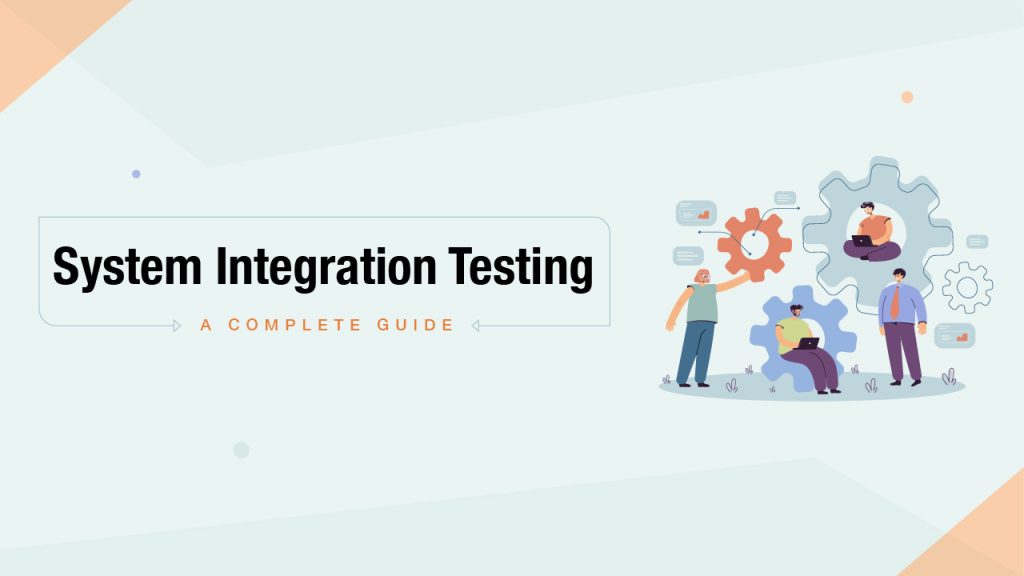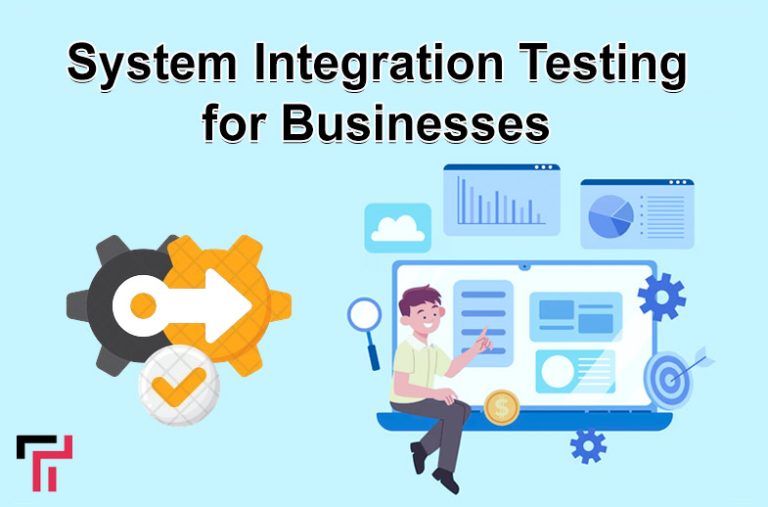In the ever-evolving landscape of software development, ensuring the quality and reliability of applications is paramount for businesses. One crucial aspect of this quality assurance process is System Integration Testing (SIT). SIT helps identify potential security risks in a system by testing how they respond to external inputs and how different components interact, like data or user input from other systems. Businesses can ensure their systems are accessible and secure from vulnerabilities before they go live by conducting thorough SIT tests. This blog post delves into the benefits and challenges of SIT testing for businesses, shedding light on its significance in software development.
What is SIT (System Integration Testing)?
System integration testing is a software testing method that allows software engineers and developers to evaluate the interactions between different modules within a unified, single system. In software systems, a module is a designated file housing a particular function. Software applications are constructed of numerous modules, each serving a unique purpose. Integration testing simplifies the task for engineers to verify the proper functioning of the software they develop. Here are typically four approaches to SIT:
Top-Down
In the top-down approach, testing initiates with the highest module and progresses downwards. Testing control follows the flow from the uppermost level to the lower levels. Modules undergo testing through integration as the process moves downward along the architectural structure’s control flow.
Bottom-Up
In this method, testing commences with the lower-level modules and progresses to the higher-level ones. Instead of employing a stub to assess incomplete modules, developers opt for a driver, simulating the functionalities of higher-level modules.
Sandwich
This approach integrates both top-down and bottom-up SIT testing methods. Testing occurs in dual directions, upwards towards higher-level modules and downwards towards lower-level ones, as integration starts at the middle layer downwards. The complexity lies in amalgamating two distinct integration testing approaches.
Read Also: Benefits of Exploratory Testing in Agile Projects
Big Bang
In this method, module integration occurs solely once all modules are finished. The engineers and developers conduct comprehensive testing on the system, resulting in a more efficient testing procedure.

Benefits of System Integration Testing
System integration testing plays a crucial role in ensuring seamless collaboration among various components within a system. It validates the interactions between different systems to pinpoint and resolve potential issues before they escalate into significant product failures. Let’s delve into the pivotal advantages of system integration testing for businesses:
Collaborate With Business Stakeholders
Effective collaboration with business stakeholders ensures that SIT testing aligns with business requirements and objectives. Engaging business stakeholders throughout the testing process guarantees alignment with their needs and goals. Additionally, soliciting their feedback on testing outcomes and adapting the testing plan accordingly is essential for success.
Improve Testing Efficiency
System integration testing aids in streamlining processes by verifying the proper functioning of all components before integrating them into a broader system. Automation tools enable the creation of test scripts to simplify the testing procedure. They facilitate testing against various scenarios and configurations, a challenge in manual testing. It is crucial that automated testing remains aligned with business requirements and objectives.
Resolve Errors and Restart as Needed
Once you’ve developed your error documentation, you can commence tackling the recorded issues to ensure seamless interaction among the modules. Subsequently, you can reevaluate the problem to gauge the effectiveness of your resolution and identify any unforeseen complications that may have arisen. This iterative process of testing and refining can persist until all identified issues are successfully resolved.
Deploy Integration Tests
Integrating the modules involves testing their interface functionality using the test cases and scripts you’ve already developed. This process aims to uncover any flaws or errors that demand immediate attention. Integration testing can be carried out manually or through automation. Manual testing offers the advantage of enabling teams to detect and address issues that might escape automation programs, whereas automation can expedite testing.
Read Also: 9 Tips for Choosing the Right Penetration Testing Company
Challenges in System Integration Testing
In the ever-evolving software development landscape, system integration testing is a crucial phase. It’s the juncture where individual components come together to form a cohesive system. However, SIT testing presents many challenges for businesses that require careful navigation to achieve successful outcomes. Here, we highlight the hurdles that businesses face in system integration testing:
Lack of Standard Tools
System integration testing is crucial for confirming and validating applications sourced from various vendors, each with distinct architectures, designs, and technologies. Given the diverse protocols, standards, and dependencies these applications adhere to, locating a universal tool accommodating multiple technologies poses a significant challenge. Having a system integration testing tool that caters to various platforms and provides transparent insights into platform alterations is a formidable endeavour.
Lack of Faster Feedback Loops
Manual testing is needed to facilitate Agile and DevOps software development. Achieving Agile development necessitates integrating a continuous testing approach, which in turn requires the utilization of a test automation tool. However, relying solely on open-source tools, especially those that are code-based, presents challenges. These tools often have steep learning curves, making it challenging for business users and testers to operate them effectively.
Complexity and Compatibility
Managing system integration and testing poses a significant hurdle due to the intricate nature and compatibility issues among system components and subsystems. Depending on the system’s architecture and design, integration occurs at various levels, such as unit, system, component, and subsystem, each necessitating distinct approaches. Discrepancies in interfaces, protocols, and dependencies across components and subsystems can lead to compatibility challenges and conflicts.
Having Different Requirements for Tools
The process of system integration testing engages various stakeholders. Test managers, for instance, delineate the scope, objectives, approach, and schedule. Testers craft and implement test cases, while system architects and developers collaborate with testers to tackle and rectify defects that surfaced during the testing phase. Seamless collaboration among these roles is pivotal for the efficacy of system integration testing.
Final Verdict
System Integration Testing (SIT) is a pivotal phase in the software development lifecycle, offering businesses substantial benefits while presenting notable challenges. Through effective collaboration with stakeholders, improved testing efficiency, iterative error resolution, and deployment of integration tests, businesses can ensure the seamless functioning of complex systems. However, challenges such as the lack of standard tools, slower feedback loops, complexity, and compatibility issues underscore the need for careful navigation and strategic planning. By acknowledging these factors, businesses can leverage the benefits of SIT testing while mitigating its inherent challenges, ultimately enhancing the quality and reliability of their software applications.







